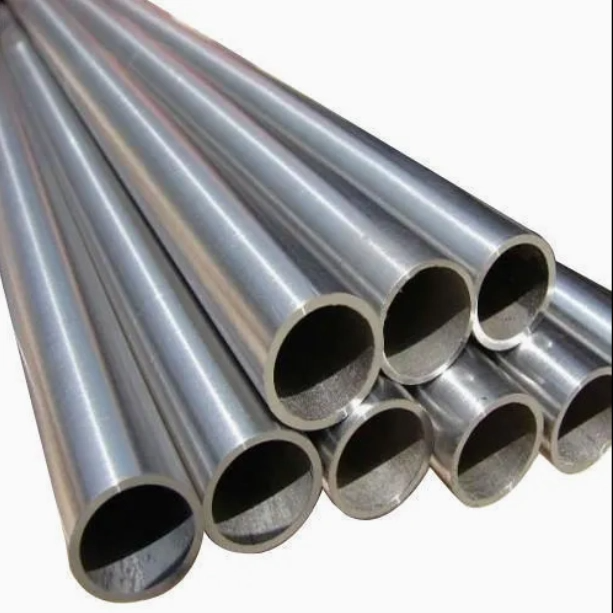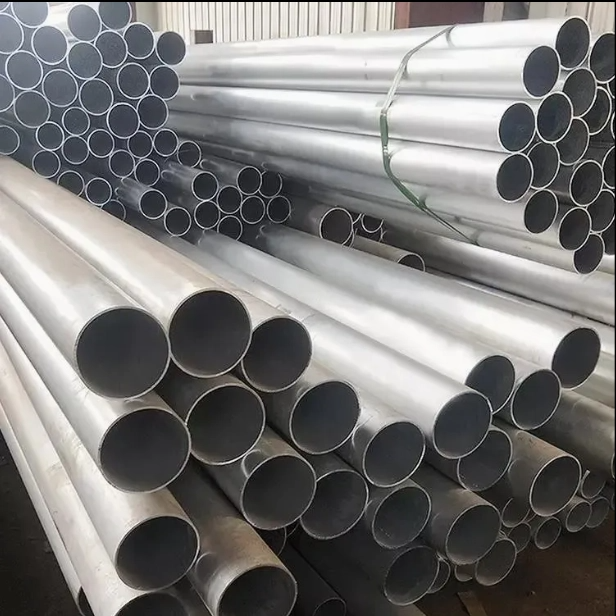T: +86-512-58335585
E: sale@chewit.cn
E: sale@chewit.cn
Shuangshan Road, Jingang Town, Zhangjiagang City, Jiangsu Province, China
Views: 168 Author: Site Editor Publish Time: 2025-07-17 Origin: Site
Titanium pipes are renowned for their exceptional strength, corrosion resistance, and lightweight characteristics, making them a preferred choice across numerous industries such as aerospace, chemical processing, medical devices, and marine applications. However, working with titanium, especially when it involves bending, requires a deep understanding of its metallurgical properties and post-processing needs.
One of the most common questions in the field of titanium pipe fabrication is: Do titanium pipes require annealing after bending? This article aims to answer this question in depth by exploring the bending process, the effects on titanium pipe microstructure, and the role of annealing in restoring mechanical properties.
When titanium pipes undergo bending, the metal experiences plastic deformation, which changes its internal structure. Bending creates stress concentrations on the outer radius of the bend and compressive stresses on the inner radius, potentially causing strain hardening, increased brittleness, or even microcracks if not controlled.
Titanium alloys, particularly commercially pure titanium and Ti-6Al-4V, exhibit high strength and moderate ductility. However, due to titanium’s hexagonal close-packed (HCP) crystal structure, it is less ductile at room temperature compared to more common metals like steel or aluminum.
This means bending titanium pipes without proper technique and process control can lead to localized work hardening or residual stresses that may affect the pipe’s mechanical integrity and fatigue life.

Annealing is a heat treatment process that involves heating a metal to a specific temperature, holding it there for a controlled period, and then cooling it down slowly. The primary purpose of annealing is to relieve internal stresses, reduce hardness, and restore ductility by allowing recrystallization of the metal’s microstructure.
For titanium pipes, annealing can:
Reduce residual stresses introduced during bending and forming
Restore ductility and toughness, which may have diminished due to work hardening
Improve dimensional stability to prevent warping or cracking during service
Enhance corrosion resistance by stabilizing the microstructure
The exact necessity of annealing depends on several factors, such as the grade of titanium, the bending radius, the amount of deformation, and the intended service conditions of the pipe.
The short answer is: It depends.
Degree of Deformation
Minor bends with large radius relative to the pipe diameter typically introduce minimal work hardening. In such cases, annealing may not be necessary. Conversely, tight bends or multiple bends significantly increase strain, often necessitating annealing.
Titanium Grade
Commercially pure titanium (Grades 1-4) is generally more ductile and less prone to cracking from bending than alloyed grades like Ti-6Al-4V, which are stronger but more brittle and prone to strain hardening.
End Use and Performance Requirements
Pipes destined for highly demanding applications such as aerospace or chemical plants often require annealing post-bending to guarantee long-term reliability and performance. Less critical applications may allow pipes to remain in the as-bent condition if testing confirms no detrimental effects.
Bending Method
Cold bending introduces higher residual stresses compared to hot bending or induction bending. Cold-bent pipes are more likely to require annealing to relieve these stresses.
In general, annealing is recommended after bending titanium pipes if:
The bending radius is less than 3 times the pipe diameter (tight bends).
The deformation strain exceeds 5%.
The pipe is made from alloyed titanium grades such as Ti-6Al-4V.
The pipe will operate in high-stress or corrosive environments requiring optimal mechanical properties.
Multiple bends or complex shapes are involved, which cumulatively increase work hardening.
Annealing temperature for titanium pipes typically ranges between 600°C to 750°C (1112°F to 1382°F), depending on the titanium grade. The pipe is held at the annealing temperature for a prescribed duration to allow for complete recrystallization, followed by controlled cooling.
| Parameter | Condition | Annealing Required? | Typical Annealing Temperature (°C) |
|---|---|---|---|
| Bending radius > 3x diameter | Minor strain, gentle bending | Usually No | N/A |
| Bending radius < 3x diameter | Moderate to severe strain | Yes | 600 – 700 |
| Titanium Grade 1-4 (CP Ti) | Light bending with minimal deformation | Often No | N/A |
| Ti-6Al-4V or similar alloys | Tight bends or significant plastic deformation | Yes | 650 – 750 |
| Cold bending method | High residual stress | Yes | 600 – 750 |
| Hot bending method | Lower residual stress | Sometimes, based on specs | 600 – 700 |
The annealing process for titanium pipes involves precise control to avoid oxidation or contamination, which can degrade surface quality and corrosion resistance.
Cleaning: Before annealing, pipes must be thoroughly cleaned to remove oils, dirt, or oxides that could affect heat treatment.
Protective Atmosphere: Annealing is commonly done in vacuum furnaces or inert gas atmospheres (argon or nitrogen) to prevent oxidation.
Controlled Heating: Gradually heat the pipe to the target temperature (600-750°C) to avoid thermal shock.
Soaking: Maintain the pipe at the annealing temperature for the required time, generally ranging from 30 minutes to a few hours, depending on thickness and alloy.
Controlled Cooling: Cool down slowly in the furnace or in an inert atmosphere to room temperature to minimize residual stresses.
Following these steps ensures the microstructure is fully recrystallized, restoring ductility and mechanical properties without compromising the pipe’s surface.

Yes, titanium pipes can be bent without cracking if proper bending techniques and radii are used. Using hot bending methods or larger bend radii helps reduce the risk of cracks. However, tighter bends increase the chance of microcracking and work hardening.
If a titanium pipe experiences significant plastic deformation without annealing, it may retain high residual stresses, leading to brittleness, reduced fatigue life, and potential cracking during service, especially in cyclic loading or corrosive environments.
No, not every bend requires annealing. Light bends with minimal deformation often do not affect the pipe’s mechanical properties enough to warrant annealing. The decision depends on factors such as bend radius, titanium grade, and application.
Proper annealing under controlled atmospheres generally maintains or slightly improves corrosion resistance by stabilizing the microstructure. However, if annealing is done in the presence of oxygen, it can cause surface oxidation that impairs corrosion resistance.
Yes, titanium pipes can undergo multiple annealing cycles if needed, but excessive heat treatment can cause grain growth, which may adversely affect mechanical properties. It’s best to minimize annealing cycles and optimize bending processes.
In summary, whether titanium pipes require annealing after bending is highly situational. The key considerations include the titanium grade, the extent of bending strain, bending radius, and final application requirements. Annealing remains a critical step for many high-performance applications to ensure dimensional stability, restored ductility, and prolonged service life.
For fabricators and engineers working with titanium pipes, it is essential to assess bending parameters and apply heat treatment when warranted. Proper annealing under controlled atmospheres following bending can significantly enhance pipe performance and reduce failure risks. By understanding the metallurgical impacts of bending and the role of annealing, stakeholders can optimize the fabrication process to fully leverage titanium’s superior properties in demanding environments.